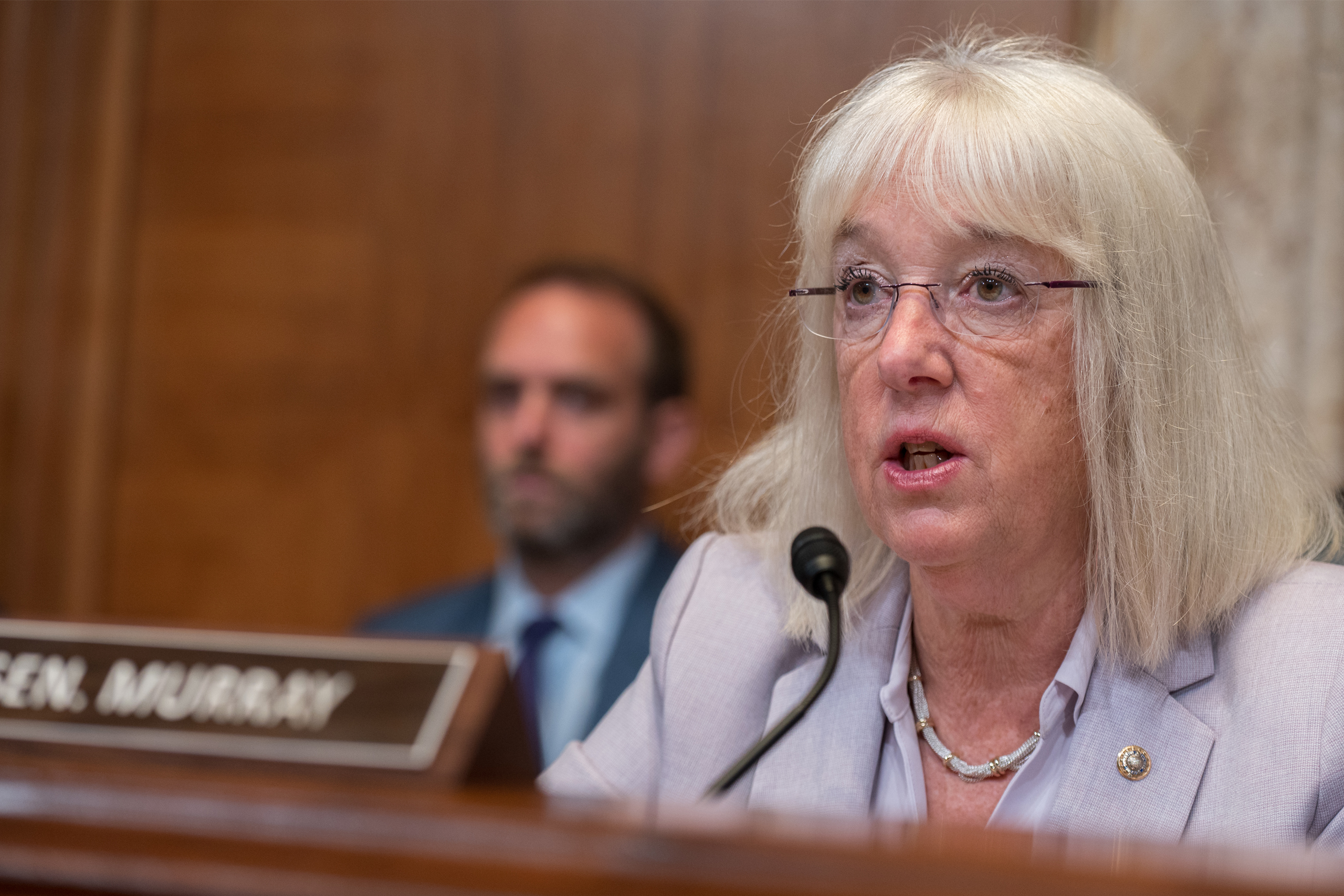Washington state is among the top ten producers of microchips and semiconductors in America
Murray: “This legislation sends a clear message that we are making things in America again and that we will continue to lead the world in manufacturing while creating good-paying jobs here at home”
***WATCH: Senator Murray delivers remarks on the CHIPS and Science Act***
(Washington, D.C.) – Today, U.S. Senator Patty Murray (D-WA) helped to pass the bipartisan CHIPS and Science Act to strengthen supply chains, invest in American manufacturing and Washington state jobs, and to lower the costs of everyday goods that rely on chips. The CHIPS and Science Act will invest in American manufacturing – especially in Washington state, which ranks among the top ten states in terms of its semiconductor manufacturing workforce. The bill will allow small and medium sized microchip manufacturers to expand and hire more workers, get products on the shelves faster, and lower costs on consumer electronics. When it comes to national security, the CHIPS and Science Act will decrease our reliance on foreign supply chains and make American manufacturing more competitive on the world stage.
“Passing the CHIPS and Science Act will strengthen our supply chains, invest in American manufacturing and jobs here in Washington state, and lower the cost of everyday goods that we all rely on,” said Senator Murray. “This legislation sends a clear message that we are making things in America again and that we will continue to lead the world in manufacturing while creating good-paying jobs here at home. I’m focused on real solutions, not soundbites—this is one important way we can tackle major challenges Washington state families are facing like inflation.”
“Passage of the CHIPS and Science Act creates local opportunities with national significance,” said Jennifer Baker, president of the Columbia River Economic Development Council in Clark County, WA. “Clark County’s semiconductor industry supply chain partners, microelectronics, and integrated circuit manufacturers, can take strides in advancing technologies and production efficiencies through passage of this important legislation. Complementing the chips-specific investments, the CHIPS and Science Act includes support for growth in additive manufacturing and bioscience sectors where we see promising regional activity. Enhanced workforce and higher education resources through the CHIPS Act underline the opportunity for more individuals to learn about and pursue careers in STEM—encouraging career path mobility and bolstering industry competitiveness.”
“The Seattle metro region is home to a flourishing information technology and computer science industry and there is no doubt the bipartisan Chips and Science Act passed today will give our local companies more leverage to compete on the global stage,” said Rachel Smith, President and CEO of the Seattle Metropolitan Chamber of Commerce. “We see clearly how this federal investment will accelerate the development of new technologies that will not only benefit companies, but the consumers who will enjoy better quality of life because of the new tools and systems to come. Thank you to Senator Patty Murray, who works tirelessly on behalf of our region, for championing this legislation that will have such a tremendous impact and we urge the House to pass it soon.”
The CHIPS and Science Act also:
- Provides $51.5 billion to spur domestic semiconductor manufacturing.
- $49.5 billion to implement a Commerce Department semiconductor initiative and research and development (R&D) programs authorized in the CHIPS Act. This includes funding for an incentive program to focus on legacy chip production to aid critical industries such as the auto industry.
- $39 billion to provide financial assistance to certain entities to incentivize investment in facilities and equipment in the U.S. for semiconductor fabrication, assembly, testing, advanced packaging, or R&D. Under CHIPS, the Commerce Department can make individual awards up to $3 billion.
- $10.5 billion to implement programs such as the National Semiconductor Technology Center (NSTC), National Advanced Packaging Manufacturing Program (NAPMP), and other R&D programs. The NSTC would serve as a hub for conducting advanced semiconductor research and prototyping, while the NAPMP would focus on the challenge of embedding fragile chips into small configurations that combine multiple systems. This will help ensure long-term benefits such as lower costs, increased functionality, and improved energy efficiency.
- $49.5 billion to implement a Commerce Department semiconductor initiative and research and development (R&D) programs authorized in the CHIPS Act. This includes funding for an incentive program to focus on legacy chip production to aid critical industries such as the auto industry.
- Provides a permanent 25 percent investment tax credit for investments in semiconductor manufacturing equipment and facilities. Recipients can elect to receive the credit as a direct payment prior to placing any eligible equipment or facilities into service.
- Boosts base authorization by 77 percent over five yearsfor the National Science Foundation
- $20 billion for the NSF Directorate for Technology, which aims to translate basic research
- $12 billion for STEM education efforts, including scholarships, fellowships, and traineeships
- Provides $11 billion over five years for Department of Commerce Technology Hubs
- $10 billion for 20 regional technology hubs
- $1 billion for the Recompete Pilot Program, which would provide targeted economic development support for persistently distressed communities
- Provides $9 billion, 80 percent over current funding levels, for National Institute of Standards and Technology (NIST):
- $6.9 billion for NIST research
- $2 billion for the Manufacturing Extension Partnership, which supports small- and medium-sized manufacturers
- $829 million for competitive grants via Manufacturing USA
- Boosts Department of Energy Office of Science by:
- $11.2 billion for applied research within the sustainable transportation, advanced manufacturing, industrial emissions, advanced materials, and renewable energy spaces
- $5.2 billion for advanced computing
- $2 billion for fusion energy research
- $7 billion for high energy physics
- $2.75 billion for National Lab infrastructure
###


